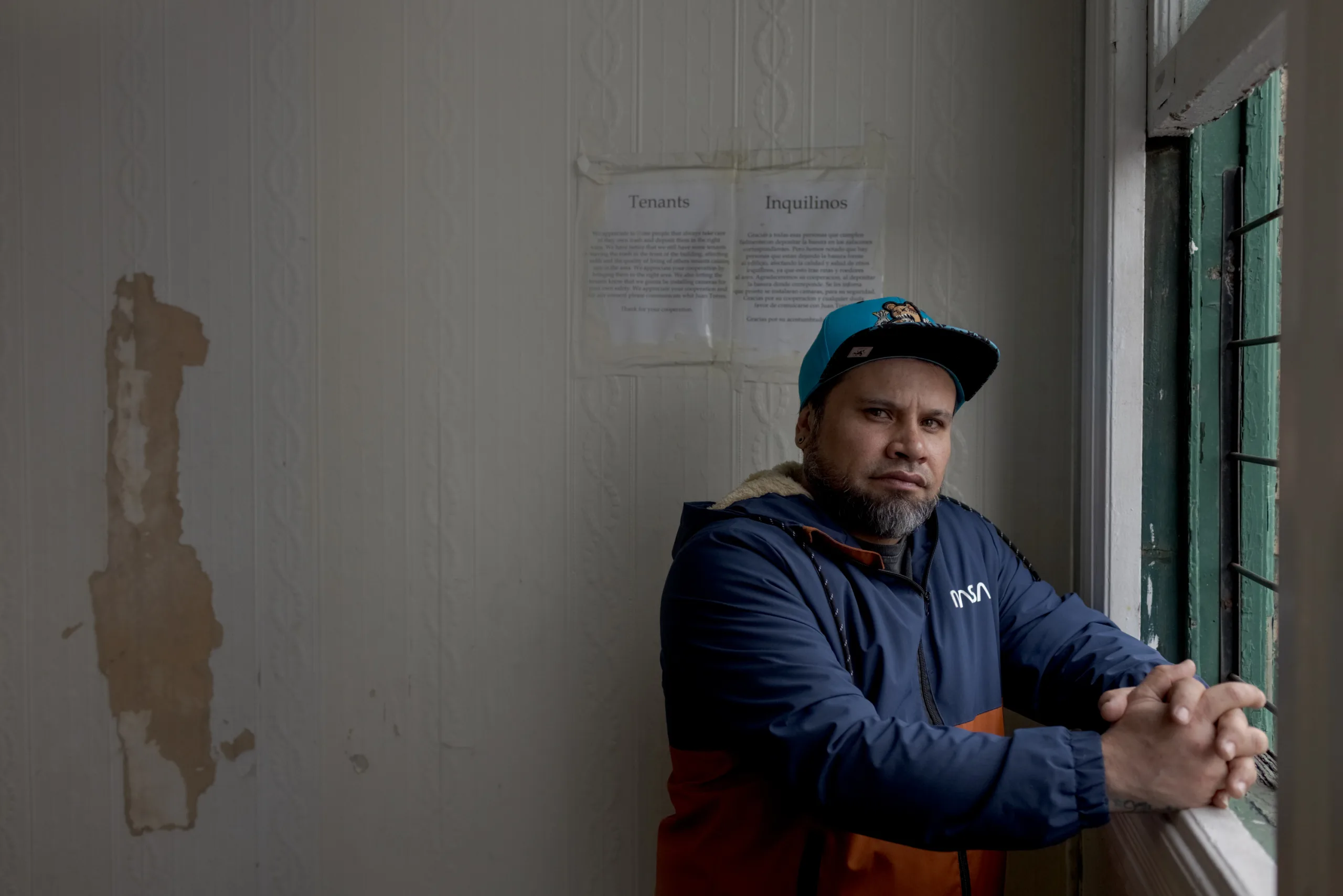One New Jersey jail where Immigration and Customs Enforcement holds immigrants hit nearly triple its capacity for federal detainees recently, according to government data.
Bergen County Jail held an average daily population (ADP) of 336 detainees in the first month of fiscal year 2018, from October to November 2017. ICE lists its capacity as 128 and notes in its records that the facility was, therefore, operating at 262 percent of capacity. Other jails in the area also exceeded their detainees capacity. Hudson County Correctional Facility’s average daily population of detainees over the same period was at 134 percent of its capacity.
ICE has long held immigrants it is trying to deport in a variety of detention settings, from private facilities to county jails. Many of those arrested in New York City end up in one of the three New Jersey county jails ICE currently uses to house detainees: Hudson County Correctional Facility, Essex County Correctional Facility and Bergen County Jail, through a mechanism called an Intergovernmental Service Agreement (IGSA).
The counties are paid a daily rate for each immigrant they hold in a separate area of the jail reserved for the federal detainees, who are not supposed to be mixed with the jails’ general population.
The figures come from files kept by ICE’s Enforcement Removal Operations division — which handles detentions and deportations — that were released to the Immigrant Legal Resource Center last November under the Freedom of Information Act.
Those statistics indicate that the average daily population of detainees at the Bergen County Jail up until that point in fiscal year 2018 was 336 detainees, while the jail’s ICE capacity is listed as 128. That means that, on an average day between the October 2017 start of the fiscal year and the data’s compilation in early November, the prison held more than two and a half times its ICE detainee capacity. At its peak, it held 380 detainees, 297 percent of capacity.
Despite the statistics showing Bergen County Jail operating at overcapacity, it is not ultimately clear what these figures mean for the detainees being held there. ICE spokesman Emilio Dabul would only say that the capacity is based on funding and local need, not necessarily the jail’s infrastructural ability to hold people.
This represents a sharp uptick in the jail’s population of ICE detainees. In the whole of fiscal year 2017, ICE’s average daily population was 225, and in 2016, it was 147, about half of where it stood in the first month of the 2018 fiscal year. The average length of stay has gone down slightly, from 101 days in fiscal year 2016 to 89 days at the beginning of fiscal year 2018.
It’s not entirely clear how the capacity for ICE detainees at the jail is determined. Bergen County Jail as a whole has 1,150 beds, according to the Sheriff’s office. Sgt. Michael Piromalli of the Bergen County Sheriff’s office, reached by phone at the operations division, said that to his knowledge, “the jail, operationally, is well below capacity” but “as far as what [ICE’s] requirements are, I don’t know.” A message left with one of the three ICE officers stationed at the jail itself was not returned.
In an email, Dabul wrote that “ICE determines detainee population capacity based on the operational needs of the local USDHS enforcement entities (U.S. Customs and Border Protection, Homeland Security Investigations and Enforcement and Removal Operations) and available funding.”
Since people held in immigration custody are not supposed to be housed in the same dormitories as the jail’s general population, it’s entirely possible that the jail could be operating below capacity while its ICE detainee population is overcrowded. “ICE detainees are kept separate and have no contact,” said Bill Schievella, a spokesperson for the Bergen County Sheriff.
Attorneys who have clients held at the Hackensack jail in Bergen County confirm that the immigration detainees are held apart.
Sarah Gillman, the supervising attorney at the Legal Aid Society’s immigration law unit, connected the shifting numbers at Bergen with both stepped-up federal immigration enforcement that has largely shed any discretion in arrests, and New Jersey’s historic bail reform, which was enacted at the beginning at the beginning of 2017 and greatly cut down the numbers of inmates in the state’s jails.
“I’ve been going to Bergen County Jail for a decade, more than a decade, and there are more dorms being used by people in immigration detention than there were before,” said Gillman. “More people are being detained, enforcement operations are broad, there are no longer priorities like there were in prior administrations.”
The ballooning intake has apparently exacerbated concerns that detainees and their lawyers have had about the conditions at the jail.
“At Bergen, there is no phone access to counsel whatsoever unless it’s paid access, and a lot of [our clients] are indigent and not able to afford it. The only way to speak with them is to go and speak to them in person,” said Courtney Lee, an attorney with the Bronx Defenders, who has immigration clients at the jail. “Over the last year and a half, I’ve seen a tremendous increase in foot traffic at Bergen by attorneys and detainees, and that’s reduced private space for consultations.” She said attorneys were now being asked to consult with their clients in cramped rooms full of other detainees, which they considered a violation of attorney-client confidentiality.
She also highlighted problems with detainees potentially from different gangs being held close together, even when their affiliations are made known to the corrections personnel ahead of time. “Alleged gang members, with alleged competing gang loyalty, those groups are being held in the same dorm.”
These claims were vigorously disputed by Schievella, who said that the wing of the jail where ICE detainees are being held is not overcrowded and that attorneys have room to operate. He added that the capacity numbers for the jail are entirely furnished by ICE and are not determined by the jail, and the jail has no role in assessing maximum ICE occupancy beyond preventing its total bed space from being exceeded.
A 2016 internal inspection report prepared by ICE’s Office of Detention Oversight cited eight compliance deficiencies at the Bergen County jail, including the improper use of strip searches by jail personnel, unclear protocols with regard to access to unmonitored telephone calls to lawyers, and use of force. Inspectors found that in the 12 months preceding their April visit, the facility had had five use of force incidents, and that the facility did not conduct action reviews following the incidents.
The Bergen County Jail appears to operate under ICE’s 2000 National Detention Standards (known as NDS 2000), which are used in most county jails with IGSAs. The standards include details on things like access to legal material, food service, and detainee grievances. ICE subsequently issued revisions of these standards — in 2008 and 2011 — that stipulated best practices with more specificity, but most detention centers have not yet started using them.
The report also notes that the facility’s ICE detainee bed capacity was 192 at the time, citing the same dataset from which the more recent data has been drawn. That suggests that the jail’s ICE capacity has actually gone down even as average daily detainee populations have kept climbing dramatically.
This influx of detainees has been particularly and unexpectedly profitable for the county. In its statement of revenues from the 2018 budget, the line item “INS Inmates” — a holdover designation from when immigration detention was handled by the now-defunct Immigration and Naturalization Service — had an anticipated value of roughly $6.6 million for the 2017 fiscal year. The actual cash intake from the program for that fiscal year ended up at nearly $8.9 million, by far the largest overperformance of any of the county’s budget items over their projected values.
The income from housing ICE detainees alone accounted for about 7.4 percent of the county’s “miscellaneous,” non-tax revenues (taxes still made up 80 percent of total revenues). It’s also the second fiscal year in a row when the actual detainee revenue exceeds the projected detainee revenue by over $2 million; the 2016 actual revenues were about $6.8 million after having been projected to be $4.1 million. The 2015 fiscal year, meanwhile, saw an underperformance, with $4.2 million taken in after $6.6 million was anticipated, in keeping with the dip from an average of 167 detainees held in the facility in 2014 to 106 in 2015, before bouncing back up to 147 in 2016. The share of the county’s non-tax revenue coming from ICE detainees has grown steadily, from 3.3 percent in fiscal year 2009 to 7.4 percent currently.
A spokesperson for Bergen County Executive Jim Tedesco declined to comment on the deal or whether the executive office had any concerns or oversight function on the possible overuse of the jail to hold ICE detainees, saying “when it comes to this agreement, and the way the jail operates, that’s ultimately the sheriff’s call.”
Hudson County similarly experienced an uptick in its ICE average daily population over the last couple of years, going from 491 in the 2016 fiscal year to 636 at the start of fiscal year 2018, with a monthly high of 669 detainees. With a listed capacity of 476 detainees, that means it had an average of 134 percent utilization in the first month of fiscal year 2018, and a high of 141 percent utilization. The Essex County jail’s average population went from 539 in fiscal year 2016 to 691 at the start of fiscal year 2018, with a high of 715, but with a capacity of 800, it’s managed to keep from breaking into overutilization.














